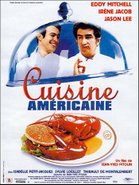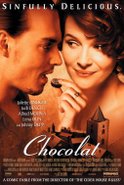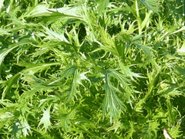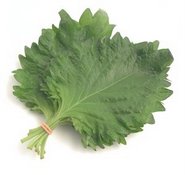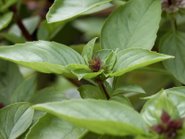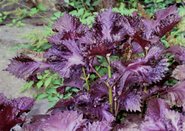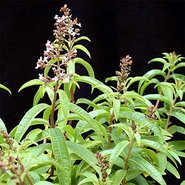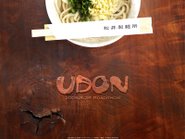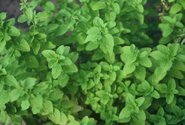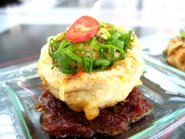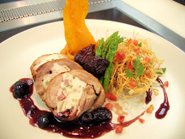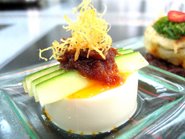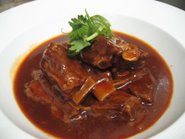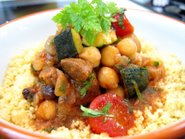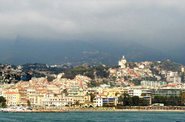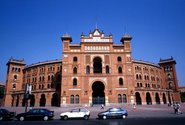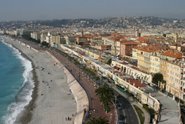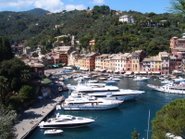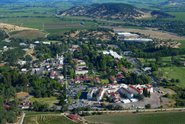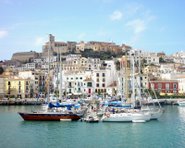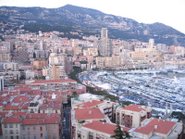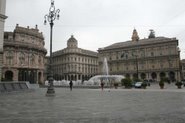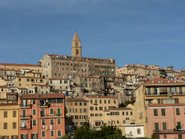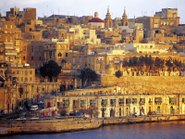Lyon - FRANCE
-Tél. : (0033) 04 78 52 23 65 -
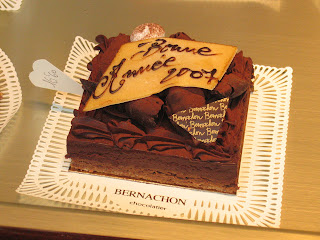 The above title is a French interpretation of being the best of the best. Six years ago, as a gift for my wife, N who was still then my girlfriend, I bought her a small box of chocolates from Paris' most famous hip and trendy Chocolatier, Jean Paul Hevin. The little box has since set the benchmark for good quality artisan chocolates in her memory. Nothing else came close or better till we stepped into Bernachon in Lyon. I am sure Jean Paul Hevin’s chocolates are still as good in taste and they continued to be marketed via a platform of modern haute couture sophistication. Benarchon on the other hand works on a formula based on traditional skills, a rich history, exclusivity, familiarity and warmth. A Lyon based culinary icon in the world of pastry arts and chocolate making, Bernachon is a third generation business having started by Maurice Bernachon the man himself.
The above title is a French interpretation of being the best of the best. Six years ago, as a gift for my wife, N who was still then my girlfriend, I bought her a small box of chocolates from Paris' most famous hip and trendy Chocolatier, Jean Paul Hevin. The little box has since set the benchmark for good quality artisan chocolates in her memory. Nothing else came close or better till we stepped into Bernachon in Lyon. I am sure Jean Paul Hevin’s chocolates are still as good in taste and they continued to be marketed via a platform of modern haute couture sophistication. Benarchon on the other hand works on a formula based on traditional skills, a rich history, exclusivity, familiarity and warmth. A Lyon based culinary icon in the world of pastry arts and chocolate making, Bernachon is a third generation business having started by Maurice Bernachon the man himself. Bernachon prides itself as a chocolatier that imports, roasts and process their own cocoa beans for chocolate making. Sourcing for the best beans from cocoa producing countries around the world, the different variety of beans and their unique characters allow the chocolate master to design his master pieces with unlimited creativity and maximum flexibility. Aided by modern technology with traditional methods of processing and recipes, the processed beans go through the two most important steps of chocolate making which is conching and tempering. Conching is a process traditional used to convert chocolate in its initial raw form which is doughy or powdery into smooth couvertures with cocoa butter. It’s like a fine milling process which makes the chocolate so smooth to taste on the palate and its takes patience and skill to understand the different amounts of required time for conching each different batch of raw chocolate. It can be anywhere from a few hours to a week depending on what kind of quality of chocolates is to be produced. Every Chef has their own recipes and it takes experience to bring out the best of the cocoa beans. Under conching will result in coarser grain chocolate while over conching it drives the chocolate to become plain or gummy in texture.
Bernachon prides itself as a chocolatier that imports, roasts and process their own cocoa beans for chocolate making. Sourcing for the best beans from cocoa producing countries around the world, the different variety of beans and their unique characters allow the chocolate master to design his master pieces with unlimited creativity and maximum flexibility. Aided by modern technology with traditional methods of processing and recipes, the processed beans go through the two most important steps of chocolate making which is conching and tempering. Conching is a process traditional used to convert chocolate in its initial raw form which is doughy or powdery into smooth couvertures with cocoa butter. It’s like a fine milling process which makes the chocolate so smooth to taste on the palate and its takes patience and skill to understand the different amounts of required time for conching each different batch of raw chocolate. It can be anywhere from a few hours to a week depending on what kind of quality of chocolates is to be produced. Every Chef has their own recipes and it takes experience to bring out the best of the cocoa beans. Under conching will result in coarser grain chocolate while over conching it drives the chocolate to become plain or gummy in texture.After the conching process which produces chocolate couverture, it is ready to be tempered where hundreds of creations with spices, nuts, liquers and flavours are produced. Artisan chocolatiers like Bernachon will then temper each piece with their respective signature flavours and profile while at the same time capturing all the finesse it takes to be. All their chocolates are handcrafted pieces and are produced daily for freshness. Unlike commercial chocolates with emulsifiers and stabilizers, Bernachon chocolates should be consumed within a month even when stored in right conditions. The sales staff explained to us that this is to encourage their customers to appreciate the freshness and full flavour of the chocolates and its fillings. The wide variety of chocolates on display was feast to the eyes. From simple nuts and couverture bars to regular truffles and the more sophisticated ones speck with gold leaves and exotic spice flavours like chili and lemon grass, each delicate piece is an elegance of its own kind. The chocolates are sold by batch weight in different box sizes and little touches like offering little sampling pieces randomly when they see that you are unable to make up your mind. We thought that was really a nice gesture.
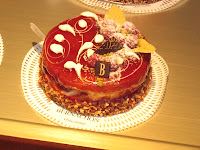
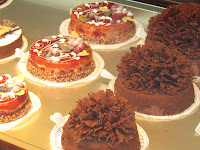

The other strength of this institution is the Patisserie arm of Bernachon. The cakes both large and small well all beautifully decorate with elegance from carved chocolate pieces, fresh fruits and sugar work. It was a visual feast for the eyes and everything look so wonderfully delicious. Style of presentation also helps and the neat rows of mini pastries on display with different flavours and decorations were sending our sweet cravings to a high.
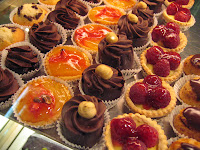
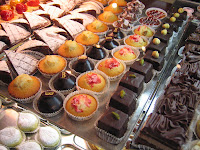
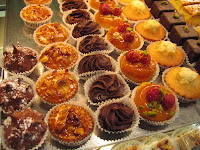
There were rows of fruit tarts, choux pastry favourites like hazelnut éclairs and Paris Breasts, flavoured mousse based slices, Magdelines, sumptuous looking white and dark chocolate slices, and the list can go on forever. Some of these pieces are crowned with visually stunning decorations that would seem to project an impressive high level of technical difficulty on a lay man’s mind. Besides pastries, there was also a colourful selection of macaroons, some with interesting flavours like cola, pineapples, Oreo cookies etc….. There were also fruit glaces and sugar coated fruit gummies on display. Beyond sweets, Bernachon also offers savoury items like different types of quiches featuring mushroom, spinach, smoked salmon and traditional Quiche Lorraine which was very good (see article below). The selection of croissants and daily de rigueur items like Pain au Chocolate and Pain au Raisins were also very tempting. I could fantasize grabbing one of those buttery flaky croissants and dipping it in freshly brewed coffee as sheer bliss in the cold winter morning.
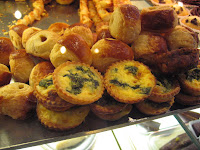

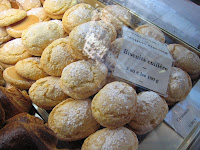
By now N has assembled a box of flavoured chocolates and picked up a bag regular ones as well while I had been happily snapping pictures of all those lovely items around here. We picked a selection of mini French pastries. Given the favourable winter weather which was like a big open air refrigerator at 2°c, it took us two days to finish the pastries with every bite of satisfaction.




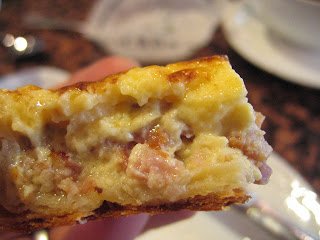 The quiche arrived at the right temperature as they had taken the initiative to serve it warm. This makes the lovely savoury custard meltingly good in the mouth and allows the pastry to give off a nice buttery note on the crust when you bite into it. By serving it warm also reduces the unpleasant feeling of eating cold grease. N is not a food connoisseur by training but she can go on raving for hours about it if she bites into something that would trigger an orgasmic experience on her palate. The quiche did just that and I must admit it was really one of the best quiche that I have tasted. Sweet onions, lightly sautéed with lardons(pancetta) not bacon was suspended in between sensational smooth custard and lovely topped with melted Emmental cheese. It reminded us of those wonderful freshly baked Sweet Egg Tarts from Leung San in Chinatown, Singapore, where the custard is still warm and runny. With the exceptional hot chocolate earlier, you could naughtily say that my wife had “multiple gastronomic related orgasms” before we could even hit lunch.
The quiche arrived at the right temperature as they had taken the initiative to serve it warm. This makes the lovely savoury custard meltingly good in the mouth and allows the pastry to give off a nice buttery note on the crust when you bite into it. By serving it warm also reduces the unpleasant feeling of eating cold grease. N is not a food connoisseur by training but she can go on raving for hours about it if she bites into something that would trigger an orgasmic experience on her palate. The quiche did just that and I must admit it was really one of the best quiche that I have tasted. Sweet onions, lightly sautéed with lardons(pancetta) not bacon was suspended in between sensational smooth custard and lovely topped with melted Emmental cheese. It reminded us of those wonderful freshly baked Sweet Egg Tarts from Leung San in Chinatown, Singapore, where the custard is still warm and runny. With the exceptional hot chocolate earlier, you could naughtily say that my wife had “multiple gastronomic related orgasms” before we could even hit lunch.
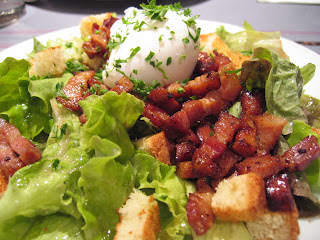 My Lyonnais Salad was a bed of mix leaf lettuces with mustard dressing, speck with sautéed smoked lardons (pancetta), tomatoes, crispy croutons and a warm poached egg. The sharp vinaigrette cut through the fattiness of the delicious smoky lardons and the runny egg yolk provided an element of subtle neutrality to the salad taking on a diplomatic compliment to the rest of the ingredients. The croutons resolved any crispy textured cravings bringing harmony to the dish’s well balanced taste and texture.
My Lyonnais Salad was a bed of mix leaf lettuces with mustard dressing, speck with sautéed smoked lardons (pancetta), tomatoes, crispy croutons and a warm poached egg. The sharp vinaigrette cut through the fattiness of the delicious smoky lardons and the runny egg yolk provided an element of subtle neutrality to the salad taking on a diplomatic compliment to the rest of the ingredients. The croutons resolved any crispy textured cravings bringing harmony to the dish’s well balanced taste and texture.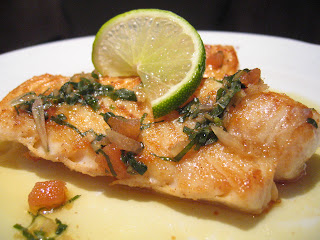 Back to the food, both main courses arrived together with the Cod Fillet Cabillaud shinning from the drizzle of olive oil and the tomato basil salsa. Not losing out to the fantastic one we had just a day before in Le Nord, N totally enjoyed the lovely moist piece of fish and its delicate flavours accentuated by the tomato basil salsa and a squeeze of lemon. She was still basking in the glow of satisfaction from the earlier experience.
Back to the food, both main courses arrived together with the Cod Fillet Cabillaud shinning from the drizzle of olive oil and the tomato basil salsa. Not losing out to the fantastic one we had just a day before in Le Nord, N totally enjoyed the lovely moist piece of fish and its delicate flavours accentuated by the tomato basil salsa and a squeeze of lemon. She was still basking in the glow of satisfaction from the earlier experience. My Daurade fillet was equally tempting with the accompanying creamy tart beurre blanc. Its very crispy skin and moist flesh was already a sensation of its own, paired with the sauce, a well orchestrated combination. Bite into one of those generously sprinkle of pink peppercorns, an explosive burst of flavours to a lovely finish as you chew on.
My Daurade fillet was equally tempting with the accompanying creamy tart beurre blanc. Its very crispy skin and moist flesh was already a sensation of its own, paired with the sauce, a well orchestrated combination. Bite into one of those generously sprinkle of pink peppercorns, an explosive burst of flavours to a lovely finish as you chew on.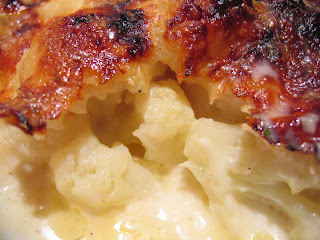
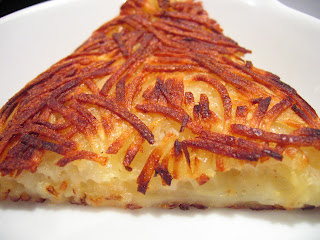
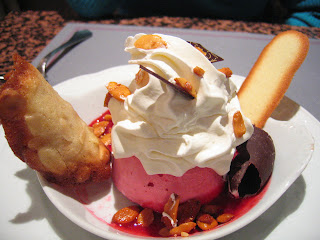
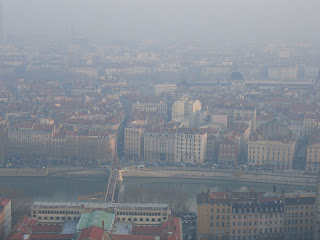
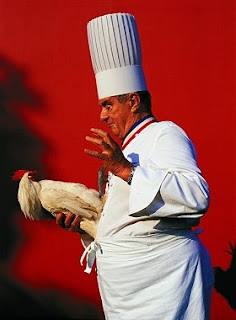
.jpg)
.jpg) Being two persons, we were given a small table by the corridor with busboys zooming pass by every other minute to tables behind us. Being Asians, they gave us French menus with no other translations available. Luckily I have built up a fairly good understanding of French culinary terms during the five years of working in the Provence region so I could decipher eighty percent of the items on the menu though not accurately to the point. We opted for the French Onion Soup, what else if not in France and Escargots Bourgogne to start with. The winter weather helps in building up of appetites for such fare which normally would be not that really suitable for tropical sunny Singapore. For the mains, I chose a Grilled North Sea Cod, (Cabillaud) while N took on a Mixed Seafood Grill Platter. As these were very traditional and down to earth dishes, I was not expecting any “Wow” factor in presentation and brasseries are usually more casual then fine dining restaurants. I tend to expect more on the taste, temperature and skill of the chefs in catching the right doneness of ingredients when cooking these dishes over and over again for the entire winter season.
Being two persons, we were given a small table by the corridor with busboys zooming pass by every other minute to tables behind us. Being Asians, they gave us French menus with no other translations available. Luckily I have built up a fairly good understanding of French culinary terms during the five years of working in the Provence region so I could decipher eighty percent of the items on the menu though not accurately to the point. We opted for the French Onion Soup, what else if not in France and Escargots Bourgogne to start with. The winter weather helps in building up of appetites for such fare which normally would be not that really suitable for tropical sunny Singapore. For the mains, I chose a Grilled North Sea Cod, (Cabillaud) while N took on a Mixed Seafood Grill Platter. As these were very traditional and down to earth dishes, I was not expecting any “Wow” factor in presentation and brasseries are usually more casual then fine dining restaurants. I tend to expect more on the taste, temperature and skill of the chefs in catching the right doneness of ingredients when cooking these dishes over and over again for the entire winter season. .jpg)
.jpg)
.jpg)
.jpg)
.jpg)
.jpg)
.jpg)
.jpg)
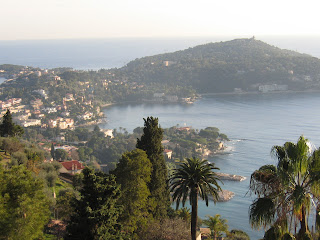
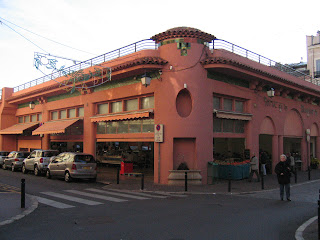

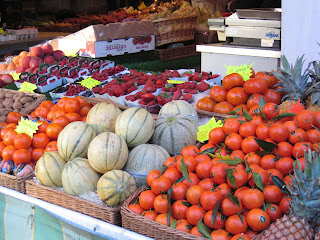
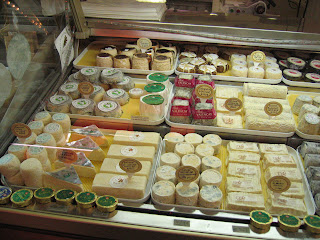

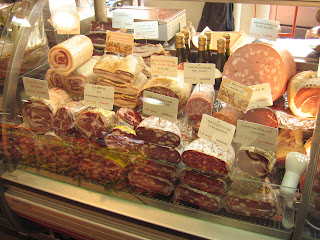
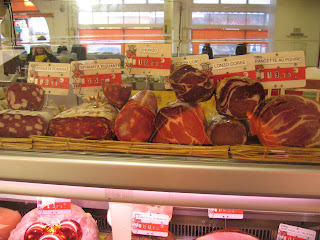
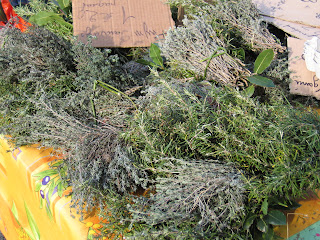

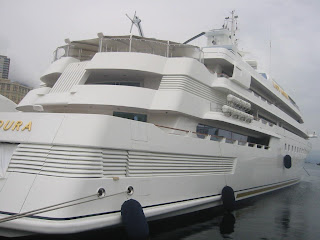
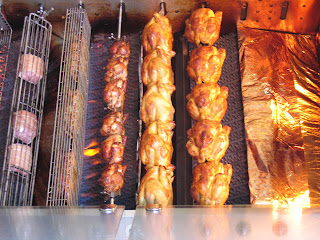
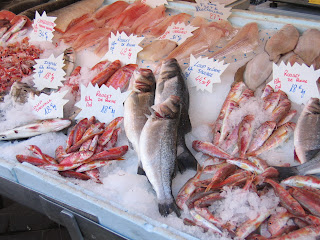
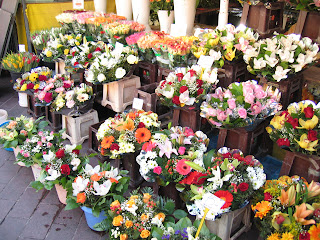
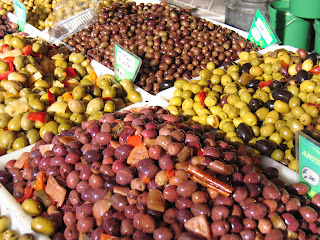

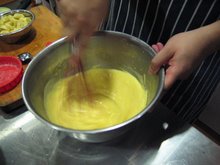

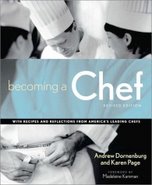
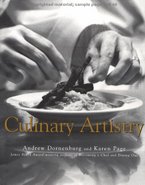


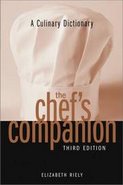


.jpg)
